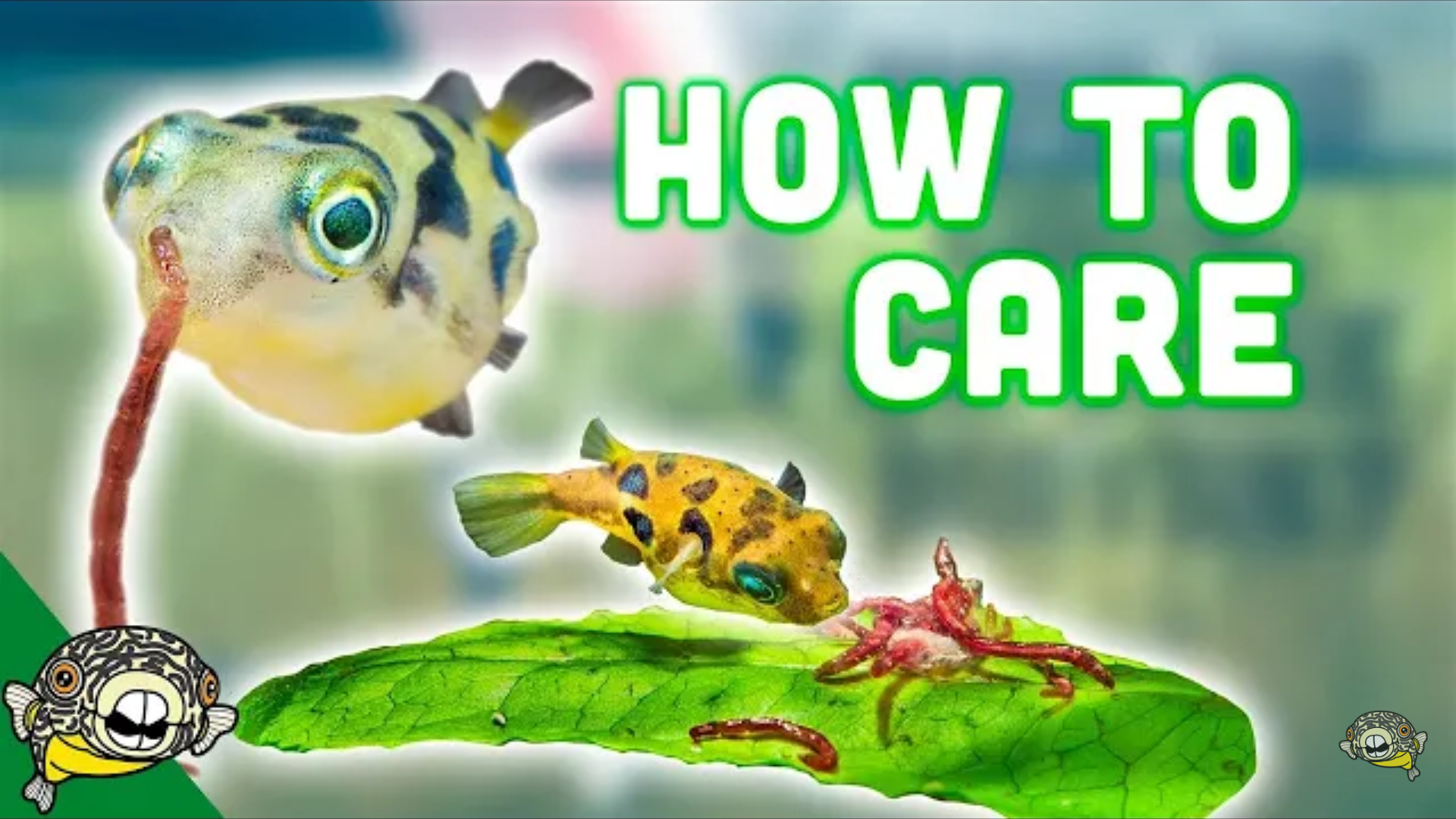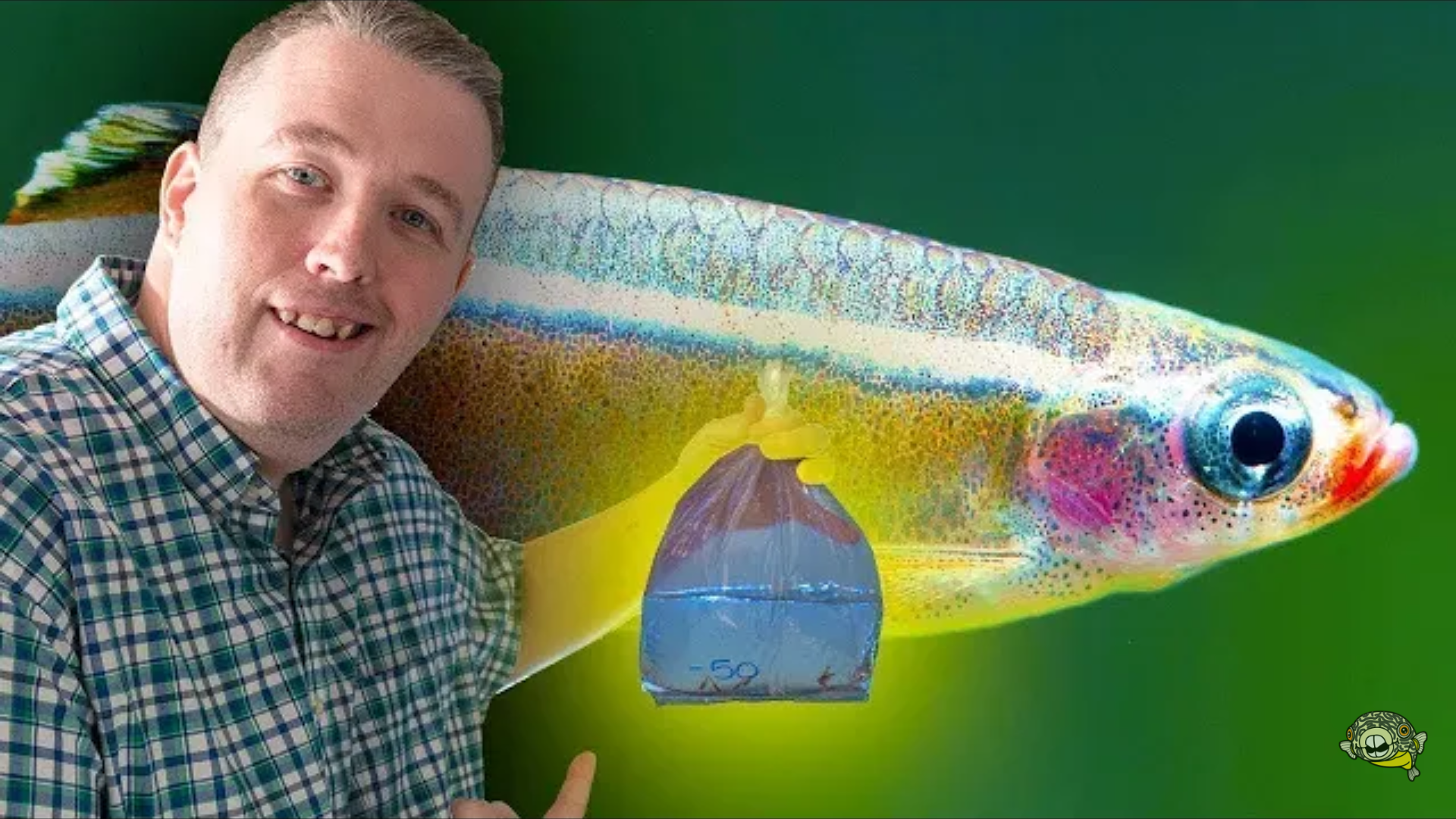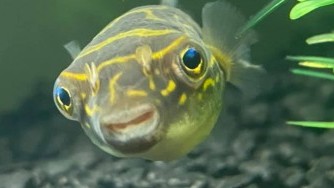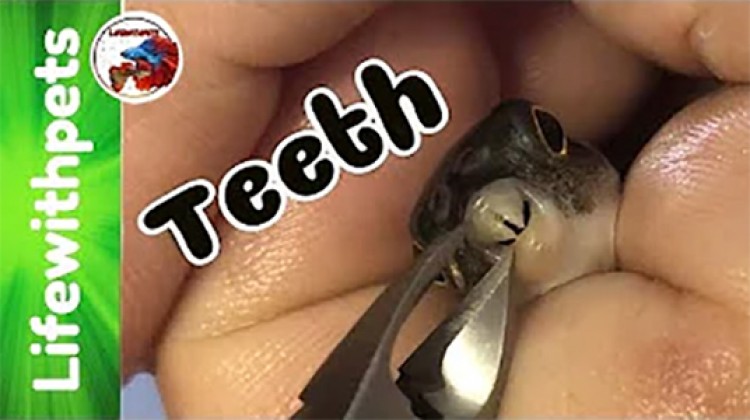- Name:
Figure 8 puffer
(View AKA's) - Family: Tetraodontidae
- Species: Puffer
- Scientific Name: Tetraodon biocellatus
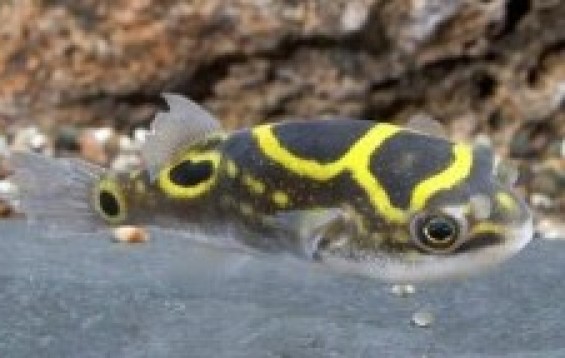

General info about Figure 8 puffer
These fish got their name due to their ability of inflating themselves with either water or air, these ability serves as a defense mechanism because it makes it harder for predators to swallow them if they are large and balloon like. Their back is brown while their underside is white, they have yellow spots and lines all over their bodies and two black eyespots on each side. They can reach up to 2.5 inches. To keep these fish in captivity water temperature should range from 72°F to 79°F and water pH should be between 7.0 and 7.5. The tank should have a sandy substrate, open areas for swimming and hiding places like caves. The tank should also have a cover since they are great jumpers. They are aggressive and as such shouldn’t be kept in community aquariums. A 15 gallon tank is the minimum recommended to keep a single individual, for each new fish added to the tank 10 gallons should also be added.
Figure 8 puffer Diet & Nutrition
This species is omnivorous. It can be fed with live foods like crustaceans and shrimps and also hard-shelled foods like clams, crickets among others.
Figure 8 puffer Origin
This species is native to Southeast Asia. It inhabits both fresh and brackish waters.
Acclimating Figure 8 puffer
The water in which these fish are packaged is different from the water in the tank, since these fish are extremely sensitive to water conditions the acclimation process is very important. This process should never be rushed. Aquarium lights should be off for at least the first 4 hours of the fish in the new tank and it should not be fed in the first 24h. There are two acclimation methods: Floating Method and the Drip Method.
Floating method - the aquarium lights should be off and lights in the room should be dim, the bag in which the fish is should be placed in the surface of the water to float for about 15 minutes, this allows the water in the bag to adjust to the water in the tank. The bag should then be cut under the knot and the top edge of the bag should be rolled down one inch, then ¼ cup of the aquarium water should be added to the bag, this step should be repeated every 4 minutes until the bag is full, then half the water of the bag should be discarded and the bag should be put to float again and ¼ cup of the aquarium water should be added to the bag every 4 minutes until the bag is full. Afterwards, the Discus can be moved into the aquarium.
Drip method – the aquarium lights should be off and lights in the room should be dim, the bag in which the fish is should be placed in the surface of the water to float for about 15 minutes, this allows the water in the bag to adjust to the water in the tank. The bag contents should be poured into a 1 gallon bucket that has never been cleaned with any chemicals, the fish should be enterally submerged. A siphon, using airline tubing, should be set up and a drip line should run from the main aquarium to the bucket. Several loose knots should be tied in the airline tubing to regulate flow. Sucking the end of the airline tube that goes to the bucket will begin a siphon, the flow should be regulated to 2 to 4 drips per second. Once the water in the buckets doubles, half should be discarded and the process should be repeated until it doubles again. Afterwards, the fish can be moved to the aquarium.
Original Detail
| Name | Species | Family | Scientific Name | More Detail | Added by |
|---|---|---|---|---|---|
| Figure 8 puffer | Puffer | Tetraodontidae | Tetraodon biocellatus | These fish got their name due to their ability of inflating themselves with either water or air, these ability serves as a defense mechanism because it makes it harder for predators to swallow them if they are large and balloon like. Their back is brown while their underside is white, they have yellow spots and lines all over their bodies and two black eyespots on each side. They can reach up to 2.5 inches. To keep these fish in captivity water temperature should range from 72°F to 79°F and water pH should be between 7.0 and 7.5. The tank should have a sandy substrate, open areas for swimming and hiding places like caves. The tank should also have a cover since they are great jumpers. They are aggressive and as such shouldn’t be kept in community aquariums. A 15 gallon tank is the minimum recommended to keep a single individual, for each new fish added to the tank 10 gallons should also be added. |
Gokhan MERMERTAS |
Changed by users
| Submitted Date | Submitted By | Status | Action |
|---|


